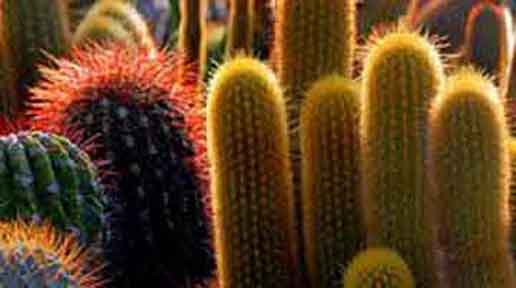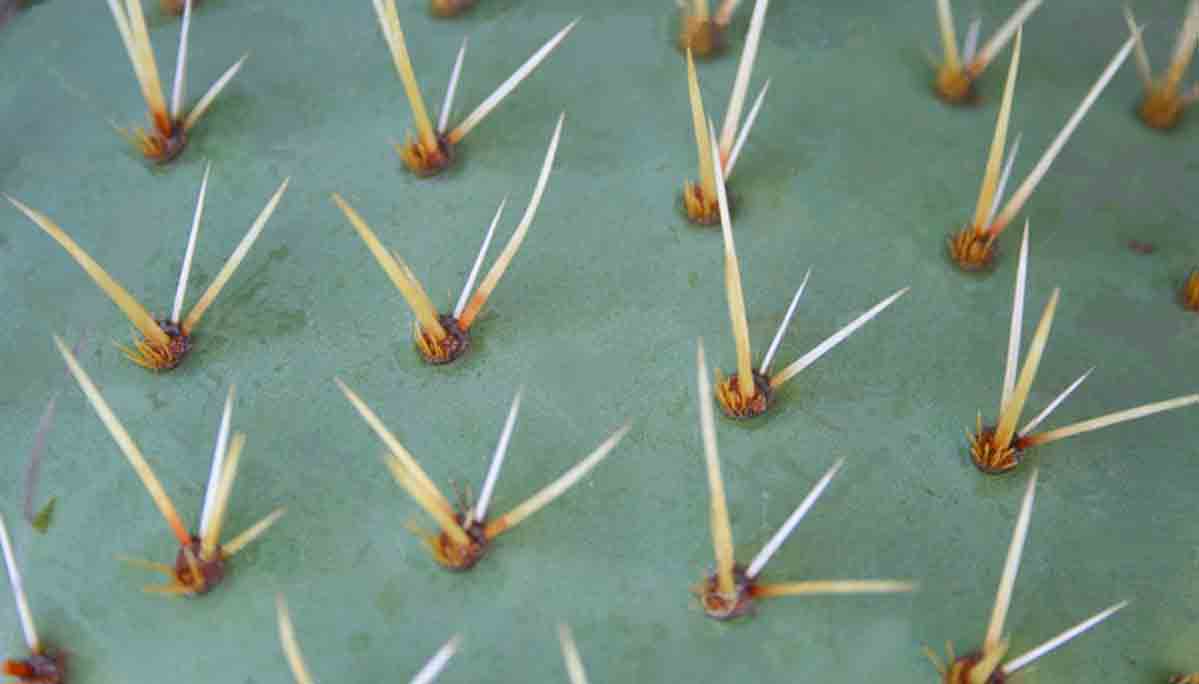 Cactus SpinesThe spines are the large "needles" that you see sticking out of a cactus that are easy to view with the eye from a few feet away. These are the "good" ones, meaning they are the easiest to remove. Sometimes you don't need to break out your cactus first aid kit because you can remove the spines by hand. If you choose to remove a spine by hand BE VERY CAREFUL that you do not cause the spine to break, which will make it even harder to remove. 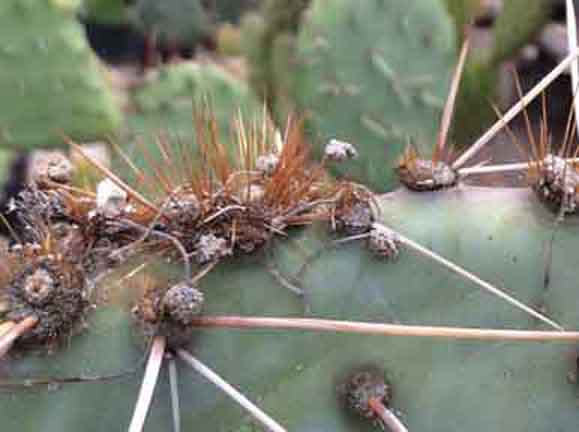 spines and glochids. Cactus GlochidsThose hair-like needles that you see when you are closer to a cactus are called glochids. These are the ones that may enter multiples at a time and are the hardest to get out because;
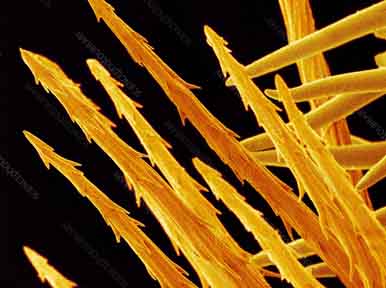 DO NOT try to remove glochids with your fingers! These small, brittle and barbed needles should be removed by using tweezers or a combination of tweezers and a "glue patch". Are Cactus Spines Poisonous?Cactus spines are not poisonous. They can, however, cause significant damage to your skin, particularly those varieties with barbed spines. Barbed spines are designed to detach and lodge in the skin of the animal or human they come into contact with. These spines are difficult to remove and can cause localized dermatitis or a granulomatous reaction if they are left untreated.  Why Do Cacti Have Spines?1. Cactus Spines Trap Air, Regulating The Plant's Temperature - Although cactus spines are small, they are often very numerous, covering the surface of the plant. In the same way as wearing a jumper traps an insulating layer of air next to your skin, the spines of a cactus trap a layer of air close to the surface of the plant, reducing ventilation. This layer of air insulates the cactus and prevents large swings in temperature. This is useful both in the very hot conditions of the desert, but also protects them from large changes in temperature between day and night, and during the different seasons, where in some desert climates, it can get quite cold at night.
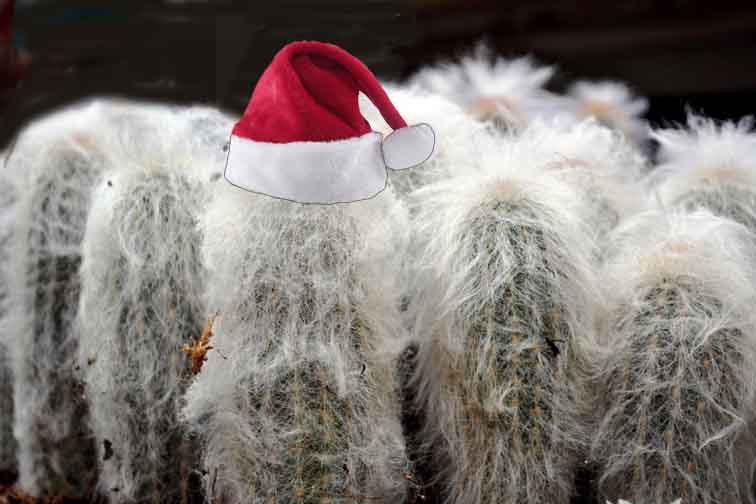 2. Provide Shade - Cactus spines are small and thin and not what you would normally expect from a sun shade. Hold a single cactus spine up and the shadow that it makes is tiny and seemingly insignificant. Because cacti spines are so numerous, the combined effect of all of them provides a surprising amount of shade. There aren't too many places to find shade in a desert and the sun could easily damage a cactus without some ability to prevent some of this reaching the surface of the cactus. In addition to reducing heat, the shade of cactus spines also reduces evaporation of water from the surface of a cactus, reducing water loss and helping a cactus survive more efficiently through a period of drought. 3. Spines Protect Cacti From Predators - Cactus spines are extremely sharp and can be very painful to touch unless you are careful. Cacti are often one of the most numerous plants in a desert environment and, for the many animals that live here, a cactus would make a welcome meal, but the spines prevent the majority of animals from feasting on these plants. Unfortunately for cacti, there are a number of animals that aren't bothered in the slightest by the sharp spines of cacti, and go ahead and eat them anyway.  Javelinas, camels and many rodents and insects will all eat cacti despite their spines. 4. Mobility And Reproduction - Some species of cactus have barbed spines which readily attach to any animals (or even humans) that get too close to them. This is a clever reproductive mechanism, most famously exhibited by Cholla (Cylindropuntia) cactuses. When anything gets to close, the barbed spines will stick in the fur or skin of the animal. Part of the cactus will detach from the parent plant and be transported elsewhere. 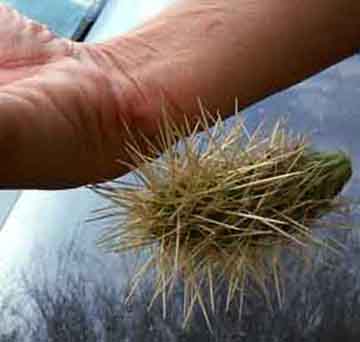 When these parts of the cactus eventually detach from the animal, they will start growing a new plant where they fall. Interestingly, this means that when you see hundreds of Cholla cacti in the desert, they are likely to be clones of each other and genetically identical, due to the efficiency of this reproductive technique. 5. Cactus Spines Help Collect Water - The deserts that many cacti live in are notoriously arid and rainfall is unpredictable. It can be a long time before the next rain, so cacti and other desert plants must make use of adaptations to collect, store and conserve water.
Cactus spines have an important role in collecting water from the air and are able to do this very efficiently due to the large surface area in contact with the air. Cacti don't lose water from these spines as they are metabolically inactive, but they allow water vapor from the air to condense onto the spines and run down onto the surface of the plant and into the soil, to be absorbed by the roots. Even when it has not rained for a long time, there can still be significant moisture carried in the air. Warm air holds more moisture, but as it cools, the air can't carry all of the moisture, and some of this will condense onto surfaces. This is why dew forms in the evening, and cacti are ready and waiting to collect this source of water from the air.  How to Remove normal Cactus Spines punctures.Note: Severe, massive punctures may require a trip to a hospital. TweezersIf you are looking for a proven method of cactus needle removal, look no further than the tweezers you keep in your bathroom. This simple but effective tool is great at removing both cactus spines and glochids. Sure, it can be time consuming to pluck each needle out with tweezers, but you can be assured that you are removing each and everyone that way. When plucking the needles from your skin, be sure to grab each one with the tweezers at the base and as close to the skin as you can get without pinching yourself. This will help ensure that you are removing the entire needle and reduce the chances of breakage. If you are having trouble seeing the cactus needles as you pluck, you might want to use a magnifying glass. Depending on where you have the needles stuck into, you might need to enlist a friend or family member to help with either holding the magnifying glass or plucking with the tweezers. Make sure you do this in a well lit area to make sure that you get all of the needles. Natural light is best but use whatever light source is available to you at the time. Depending on the type of cactus needles you're dealing with and how deep they are, you might consider using pliers or a hemostat. Pliers are ideal for thick spines, especially those that have a hook on the end. The pliers will be able to grip the spines a bit more tightly than the average set of tweezers. Hemostats are also great, but not everyone has them on hand. The type that locks into place is also helpful in getting a grip on cactus needles, but the hemostats smaller grip will be more precise than pliers. GlueYes, you read that right. Glue is a surprisingly effective method of cactus needle removal. It's less effective for cactus spines, but it's incredibly helpful in removing glochidia. Though glue is one of the messier methods, if you're dealing with glochids it is time to get out the Elmer's glue. 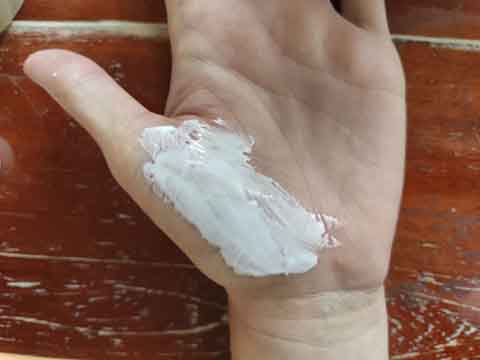 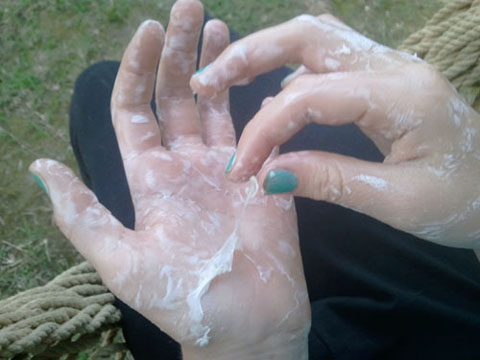 Some people find that glue is best used in combination with gause. First, they use the tweezers to remove as many needles as possible, then follow up with glue. However, you can also use glue by itself. Use your best judgment to decide what's best for your unique situation. To use Elmer's glue, or any other brand of similar glue, carefully spread a thin layer over the affected area. Be careful not to break the needles as you spread the glue.  Some people choose to use glue by itself, but many people have found success in laying a thin layer of gauze over the top of the glue. The purpose of the gauze is to help you get a grip on the glue to aid in removal once it's fully dried. After you have applied the glue and optional gauze, you will need to wait anywhere between 15 and 30 minutes for the glue to dry. Drying time will depend on several factors including the thickness of the glue layer, temperature, and humidity of your environment. Once the glue has properly dried, you can slowly peel it away from your skin. As you peel, the glue should take the glochids with it. If you have any particularly stubborn glochids stuck in your skin, you may need to repeat the process. As Elmer's glue is non-toxic, it shouldn't cause any problems, but if you need to remove needles from a large area and you have sensitive skin, you might want to patch test it. A patch test will make sure that you don't have any type of reaction to the glue, which can further irritate your skin.
 Obviously cacti have significant aesthetic appeal to a lot of people, which has caused cactus societies to spring up around the world. The flowers of cactuses tend to be intensely bright and vivid and some are uniquely sented.  Cactuses are a critical part of desert ecosystems. Grass in the desert is sparse so the fleshy stems and fruits of cactuses are the main source of food for many animals such as jackrabbits and javelinas. Doves, hummingbirds, and many other birds and bats rely on their nectar and pollen. Additionally, the fruits and flesh are pretty tasty when they've been properly de-spined. So there's lots of ways to love cacti, just try to admire them from a distance.
|
